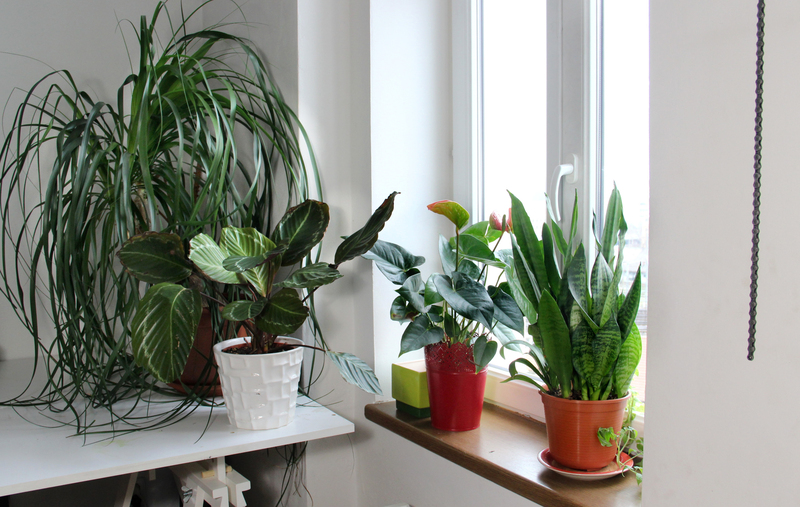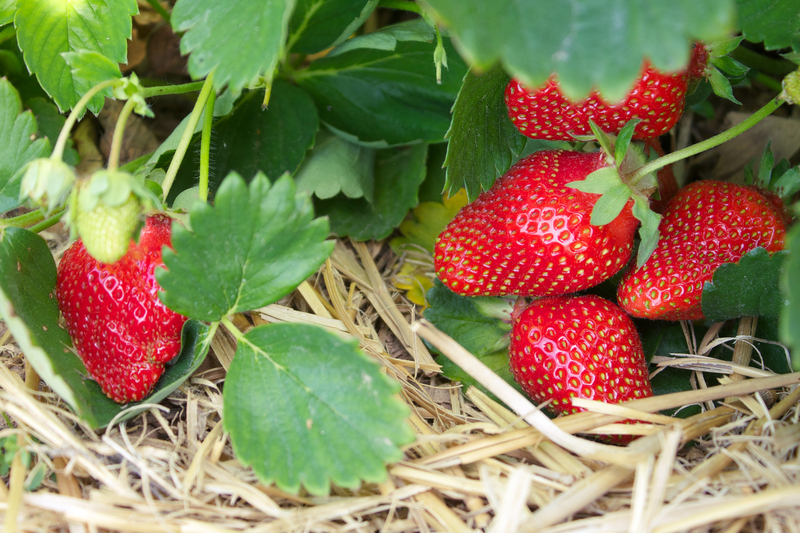Bloom and Thrive: 9 Tips for Those New to Gardening
Posted on 24/06/2025
Bloom and Thrive: 9 Tips for Those New to Gardening
Gardening is a joyful and rewarding hobby that allows you to connect with nature, enhance your outdoor space, and even grow your own food. However, if you're new to gardening, the process can seem daunting at first. Rest assured, with the right beginner gardening tips, anyone can transform a bare patch of land--or even a balcony--into a flourishing paradise. In this comprehensive guide, you will discover nine essential tips to help your garden bloom and thrive from the very start.
Why Start Gardening?
Whether you dream of harvesting homegrown vegetables, picking your own fresh flowers, or simply want to create a peaceful sanctuary, there are many reasons to take up gardening. Here are a few benefits that inspire countless beginners every year:
- Mental and physical health benefits, including reduced stress and increased physical activity.
- Delicious, nutritious harvests when growing fruits, herbs, and vegetables.
- Enhanced curb appeal and increased property value.
- Wildlife support for bees, butterflies, and birds.
Ready to dig in? Here are nine vital tips for gardening newcomers to help your green space flourish.

1. Start Small and Choose the Right Location
One of the most common mistakes for those new to gardening is biting off more than they can chew. A sprawling garden can be overwhelming to maintain. Instead, start small--even a few containers on a windowsill or balcony can build your confidence and skills.
Selecting the Ideal Spot
- Pick a location with at least six hours of sunlight daily. Most plants, especially vegetables and flowers, need ample sunlight to thrive.
- Ensure you have convenient water access. Dragging hoses or carrying watering cans over long distances quickly becomes tiresome.
- Look for slightly elevated, well-draining areas to avoid waterlogged roots.
2. Understand Your Soil
A healthy garden starts from the ground up. Soil quality is a top indicator of which plants will flourish in your garden. Take time to analyze and amend your soil for the best results.
How to Test and Improve Your Soil
- Soil Test: Use a kit from your local garden center to determine pH level and nutrient content.
- Add Organic Matter: Compost, leaf mold, or well-rotted manure boost fertility and improve texture.
- Adjust pH: Lime can raise pH; sulfur can lower it. Most plants prefer a neutral pH.
With healthy soil, your plants' roots will bloom and absorb nutrients more efficiently, ensuring they grow lush and strong.
3. Choose the Right Plants for Beginners
Selecting the correct plants for your region and skill level makes gardening easier and more rewarding. Some plants demand lots of care, while others are almost foolproof for beginners.
Beginner-Friendly Plants That Bloom and Thrive
- Marigolds: Bright, colorful, and pest-resistant annuals.
- Sunflowers: Fast-growing and striking, ideal for children.
- Lettuce and Radishes: Quick-harvest vegetables perfect for first timers.
- Herbs: Basil, mint, and chives grow easily in pots or garden beds.
- Petunias: Long-blooming and low-maintenance flowering plants.
Always research plant tags or consult with your local nursery to ensure your choices suit your local climate and soil conditions.
4. Learn the Basics of Plant Spacing and Companion Planting
Overcrowding is a classic rookie mistake that can lead to poor air circulation, disease, and stunted growth. Following spacing guidelines allows plants to bloom to their full potential.
- Read the labels: Plant packets and containers list spacing information.
- Plan your layout: Use graph paper or online garden planners to visualize your bed before you plant.
Companion Planting Benefits
Some plants actually help each other thrive. For example, marigolds repel pests from tomatoes, while basil enhances tomato flavor.
5. Master the Art of Watering
Watering can make or break your garden's success. Too little leads to wilting, while too much invites root rot and disease. Here's how to keep your plants hydrated and healthy:
- Morning Watering: Helps prevent mold and mildew by allowing leaves to dry throughout the day.
- Deep, Infrequent Watering: Encourages deep root development rather than shallow, surface-level roots.
- Use Mulch: Organic mulch such as straw or bark retains moisture and suppresses weeds.
Check soil moisture regularly by sticking your finger an inch into the soil--or invest in a soil moisture meter.
6. Feed Your Plants Properly
Even the richest soil will eventually need replenishing. Regularly feeding your plants the right nutrients helps them bloom bigger and last longer throughout the season.
Types of Plant Food
- Compost: The best all-purpose, slow-release fertilizer. Incorporate it into your soil before planting and use as a top-dressing during the season.
- Balanced Fertilizers: Look for numbers like 10-10-10 (NPK) which provide nitrogen, phosphorus, and potassium.
- Specialized Fertilizers: Roses, vegetables, and lawns may require blends formulated for their unique needs.
Tip: Avoid over-fertilizing; too much can damage plant roots and slow growth.
7. Keep Weeds Under Control
Weeds compete with your plants for water, nutrients, and light. Consistent weeding is essential, especially in the early stages when seedlings are vulnerable.
- Pull weeds regularly: It's easiest after rain when the soil is soft.
- Apply mulch: Smother weeds before they start by adding a thick layer of organic mulch or landscape fabric.
- Stay vigilant: Inspect your garden a few times each week to catch and remove weeds early.
8. Protect Your Garden from Pests and Diseases
Nothing is more discouraging than seeing your thriving plants fall victim to pests or disease. With a little attention and proactive care, you can minimize damage while keeping your garden eco-friendly.
Integrated Pest Management (IPM)
- Inspect plants regularly for wilting, holes, or discoloration.
- Practice crop rotation to prevent soil-borne diseases.
- Encourage beneficial insects like ladybugs and lacewings that prey on harmful pests.
- Use organic solutions such as neem oil, insecticidal soap, or physical barriers.
If you must use chemical treatments, always read directions and use sparingly to avoid harming pollinators.
9. Keep Learning and Enjoy the Journey
Gardening is a lifelong adventure. Each season brings new successes and challenges. Don't get discouraged by setbacks--instead, see them as part of your growth as a green thumb.
Resources for Gardening Beginners
- Local nurseries and extension offices: Offer advice tailored to your region.
- Online forums and social media: Connect with experienced gardeners who love to share tips.
- Gardening books and magazines: Provide deeper dives into specific plants, designs, and techniques.
Take photos, make notes, and celebrate your progress. Remember, your goal is not just a beautiful garden, but the joy of nurturing life and experiencing nature firsthand.

Bonus: Essential Gardening Tools for Beginners
Having the right tools can make tasks easier and support your journey from seed to harvest. Here are must-haves for new gardeners who want to see their gardens bloom and thrive:
- Gloves: Protect hands from thorns and dirt.
- Hand trowel: Ideal for planting and transplanting small items.
- Watering can or hose: For precise and efficient watering.
- Pruners: Necessary for trimming plants and harvesting produce.
- Garden fork and spade: Useful for preparing and aerating the soil.
Conclusion: Let Your Garden Bloom and Thrive
Starting your own garden may seem intimidating at first, but with a little patience, practice, and these nine essential tips, you can create a thriving sanctuary bursting with life and color. Remember to start small, tend your soil, select the right plants, and water wisely. As you develop your gardening skills, you'll find each blossom and harvest incredibly rewarding. So grab your trowel, get your hands dirty, and begin your journey to a garden that truly blooms and thrives.
Frequently Asked Questions for Gardening Beginners
- How do I know what plants grow in my area?
Visit your local nursery or consult gardening extension services--they know what blooms best in your specific location. - How often should I water my new garden?
Check the soil daily. Water when the top inch feels dry, usually 2-3 times per week depending on rainfall and temperature. - What's the fastest way to see results?
Start with fast-growing plants like salad greens or sunflowers. They sprout quickly, rewarding your efforts sooner.
Start your gardening adventure today and enjoy the peace and satisfaction of nurturing your own oasis. With these essential beginner tips, you'll watch your garden--and your confidence--bloom and thrive!

